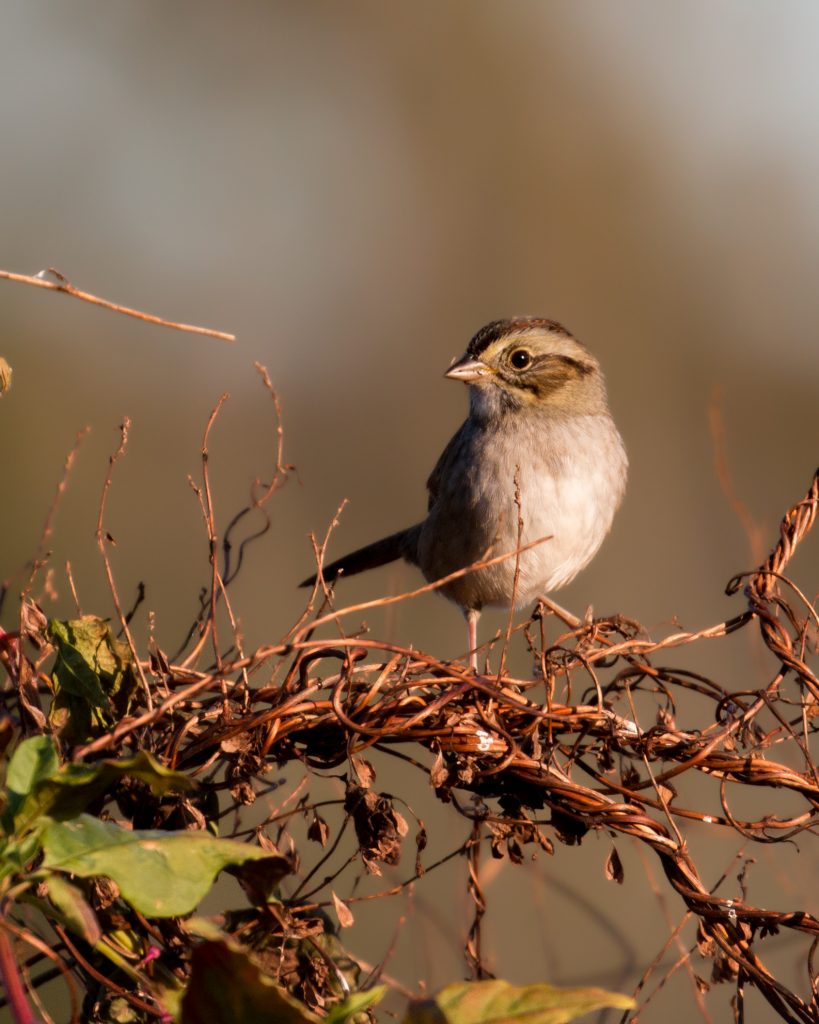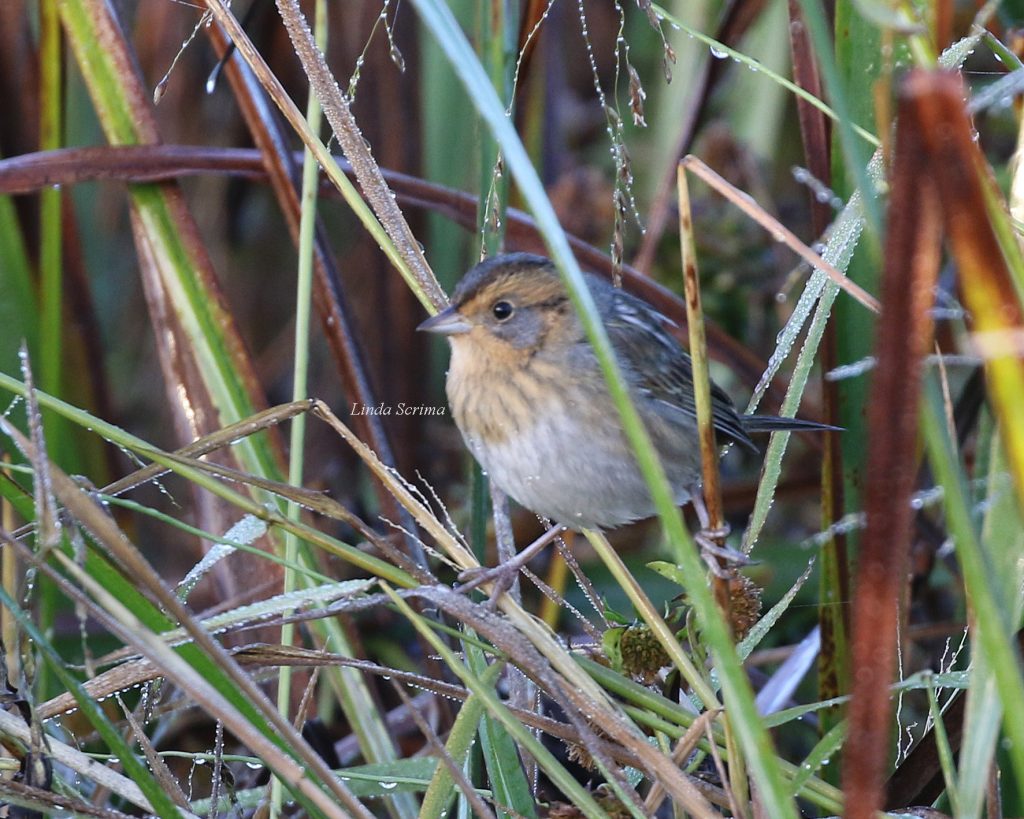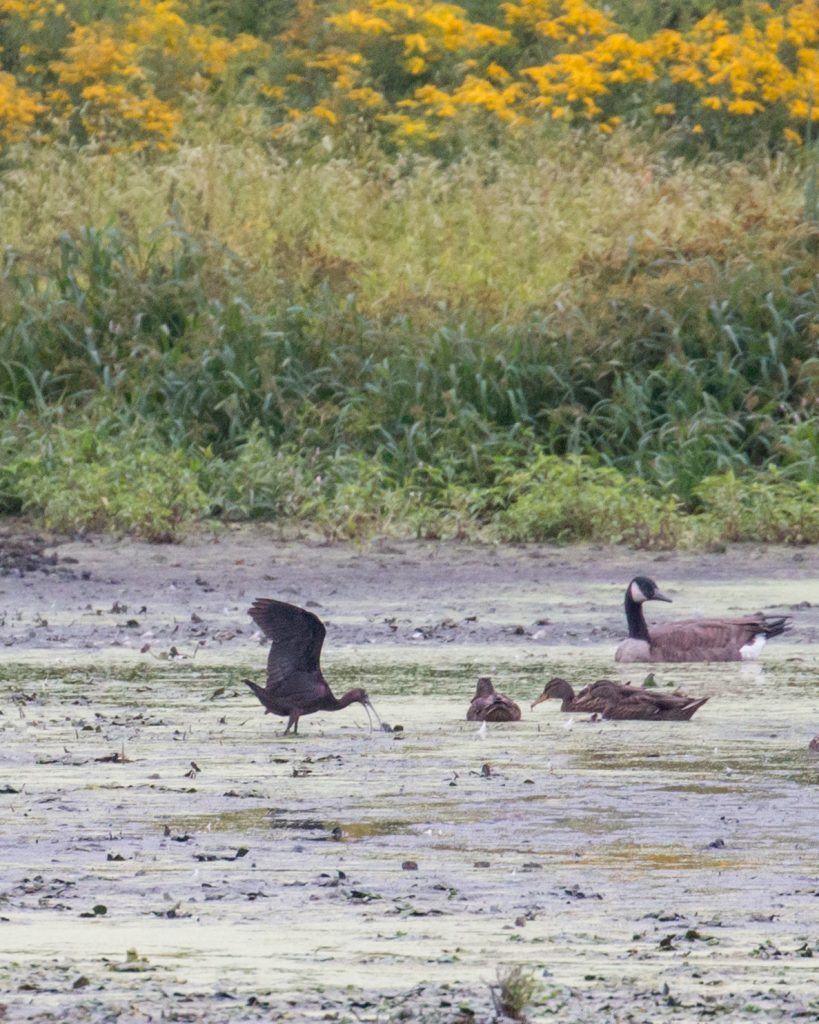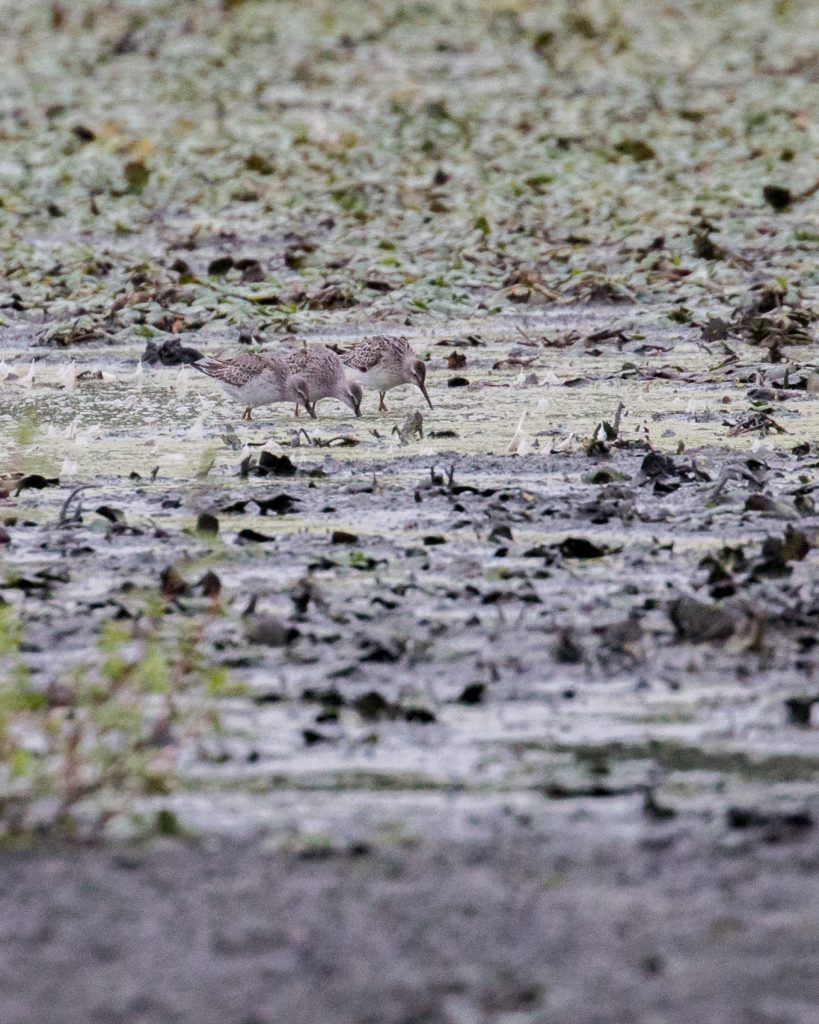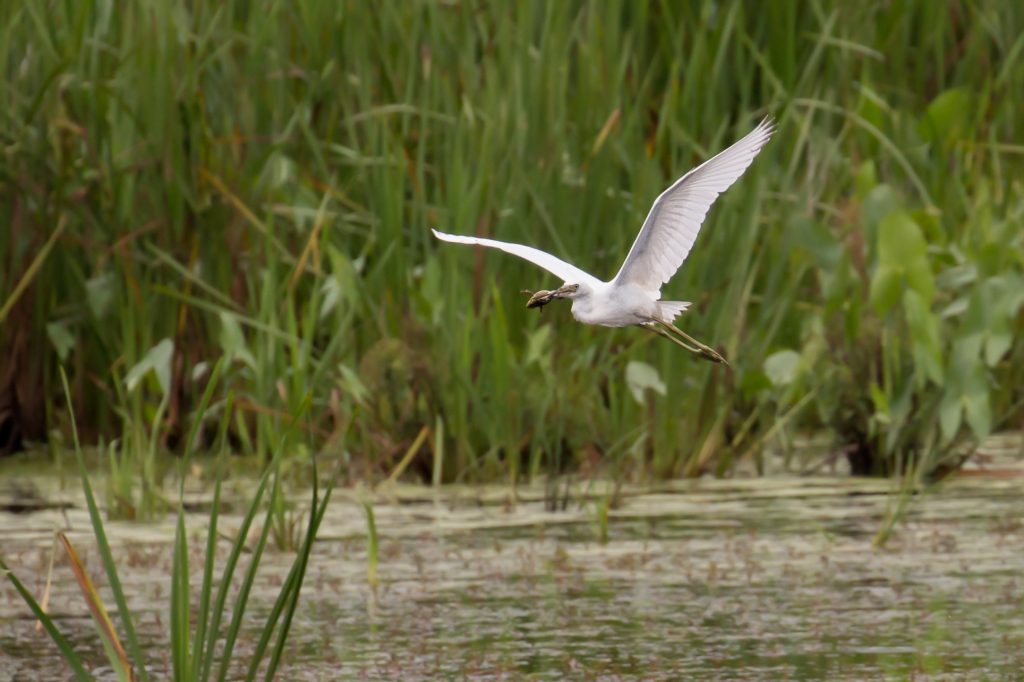
My weekend of birding started early on Saturday morning. Following up on a tip from Rob Stone, I headed out to Wallkill River National Wildlife Refuge’s Liberty Marsh. When I arrived, birding bud Linda Scrima was already there, viewing the main part of the marsh from the viewing platform. We walked out to view the pond north of Oil City Road, where a beautiful sight awaited us – 36 PECTORAL SANDPIPERS were huddled together in beautiful morning light. We took photos and scanned for more shorebirds. A single bird flew in and joined the Pecs – it was a WHITE-RUMPED SANDPIPER! Further scanning revealed two distant Wilson’s Snipe and another distant bird that I identified in the field as a Semipalmated Sandpiper, but in retrospect, with the bird being so far out, it is maybe best left unidentified. I had to get up to Mount Peter for hawkwatch, so we headed back to the parking lot. We took one last look at the pond in front of the platform and found yet more shorebirds – 7 Greater Yellowlegs and nearly a dozen Lesser Yellowlegs! What a great morning for shorebirds in OC!

Hawkwatch was once again a bust for me – so far, I am snake bitten this season for sure. I even had the big guns up to help me (Judy Cinquina and Denis Ferrell, fellow Mt. Pete counters), but it didn’t matter, the birds were not flying on this day. Jeff and Elizabeth Zahn visited and turned their (and mine) hawkwatch luck around. We had 12 of my 19 birds in the hour or so while they were there, including a pair of beautiful adult Red-shouldered Hawks that flew directly over the platform. The biggest news during hawkwatch had nothing to do with hawks at all – Maria Loukeris had located and photographed a SAY’S PHOEBE out at Liberty Marsh! She could barely believe it and she sent out photos to confirm the ID. Once confirmed, several folks went out for the bird but it was not relocated. I had plans directly after hawkwatch, so my search for the Says would have to wait until Sunday morning…

So, Sunday morning I went to Liberty Marsh to try for the the Say’s Phoebe. This time when I arrived, Scotty Baldinger was at the viewing platform. It was great to see Scotty (it always is!) and, in spite of not relocating the SAPH, we had a fabulous morning of birding. Sparrows were abundant and we had 5 species: Savannah, Song, White-throated, Swamp, and my FOS WHITE-CROWNED SPARROWS. Other highlights included a flock of over 40 American Pipits flying over our heads and landing in a field. Initially it did not look like we would do any good for shorebirds, but on our way back I spotted a flock in flight. There was an adult Peregrine Falcon in the area, we had just seen it earlier, and I’m guessing it was keeping them on their toes. The birds eventually put down in the pond north of Oil City Road – it was the same flock of Pectoral Sandpipers with the White-rumped Sandpiper. The flock was jumpy and took laps around the pond, allowing for some decent photo ops. They eventually left that pond and put down in the marsh south of Oil City Road; we were unable to relocate them. One last look from the viewing platform got us one Greater Yellowlegs and 3 Lessers. Scotty and I parted ways; I hit a couple other spots before heading home, but they were not as productive. What an excellent weekend of birding! I feel like I need it.
